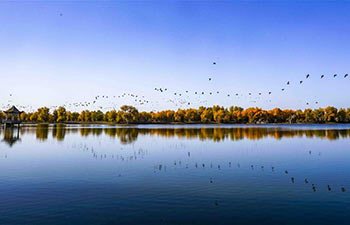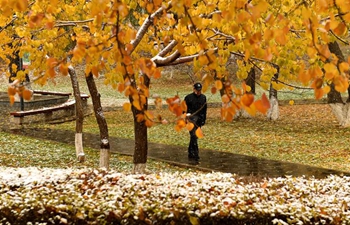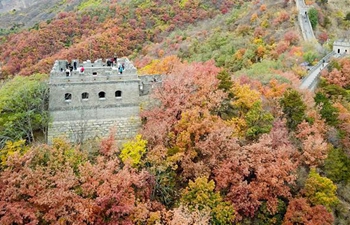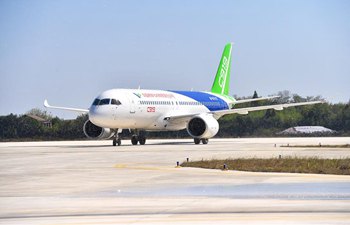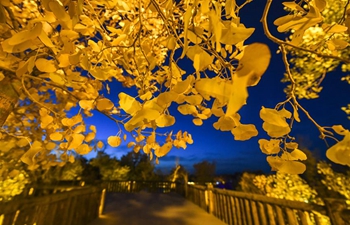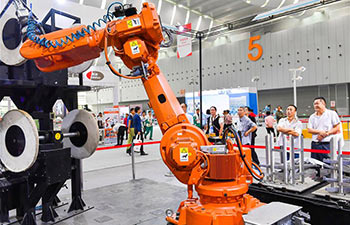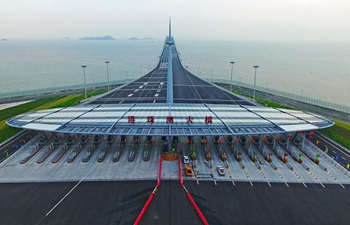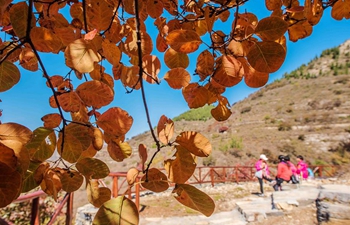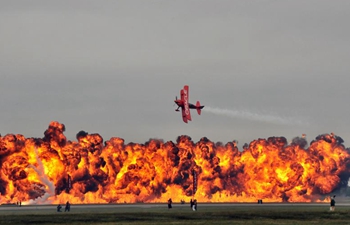
A visitor takes a photo in the National Museum of Damascus, Syria, on Oct. 28, 2018. The National Museum of Damascus re-opened its gate to visitors for the first time in several years on Sunday. (Xinhua/Ammar Safarjalani)
DAMASCUS, Oct. 28 (Xinhua) -- The National Museum of Damascus re-opened its gate to visitors for the first time in seven years on Sunday.
The museum opened amid the presence of local and foreign archeologists who hope that the event could be a prelude to re-opening museums in other Syrian cities.
The event was highlighted as the Syrian government had worked between 2012 and 2017 to hide the contents of the museums across the country in safe places due to the war and for fear of losing them.
As the situation has become better and safer in the country, the Directorate-General of Antiquities and Museums in Damascus opened the gates of the museum, more specifically the sector of the Classical Era, which is almost half of the museum, while other sectors are expected to be re-opened soon.
Maamoun Abdul-Karim, an antiquities expert and former antiquities chief in Damascus, told Xinhua that the Syrian government had salvaged over 300,000 archeological pieces from museums across the country and hid them in Damascus.
He said the re-opening of the Damascus museum is the beginning of re-opening the closed doors of antiquities.
"The opening of the museum by the general directorate of the antiquities and museums is a beginning of hope but we are in need for a lot of efforts and capabilities, time and ever-lasting peace in all Syrian provinces so that all of the Syrian museums could be re-opened in all Syrian areas," he said.
He said the return of Syrian museums is the hope of all Syrians and foreigners who love Syria.
"This is our hope and the hope of every loving person to Syria from the people of Syria or the friends of Syria because we have a world heritage and a humanitarian heritage," he wished.
He said that the efforts exerted to preserve the antiquities were huge, adding that every Syrian should be proud of that.
Bassam Jamous, a Syrian archaeologist, said foreign experts helped in preparing the antiquities for the re-opening of the museum.
Claus-Peter Haase, former director of the Museum of Islamic Art in Berlin, said he was invited to Damascus to attend the opening ceremony of the museum.
"I am very surprised to see very modern and very impressive installation of the antiquities collection in the museum," he said, adding that the antiquities officials in Syria made a great job preserving the pieces that were brought in from other Syrian cities.
Many visitors showed up at the museums on the balmy fall afternoon in Damascus, especially those who share interest and love for the world of antiquities and history.
Nariman Ojaili, a visitor, told Xinhua that she is happy to see the museum re-open with salvaged pieces showcased again.
"We have for long been waiting for the re-opening of the museum because it's something important and big as it contains our heritage. It's a very lovely feeling and we are so happy with this re-opening," she said.
Aside from the antiquities that have been hidden by the government from museums nationwide, more than 9,000 pieces, found from almost all Syrian areas, were delivered by the Syrian army and allied forces to the antiquities departments to be restored and returned to the museums.
However, there is a fact that the militants succeeded in smuggling an unknown number of antiquities outside Syria to neighboring countries such as Lebanon, Jordan, and Turkey. From those countries, some of the pieces were smuggled to Europe.
In addition to the artifacts, five out of the six Syrian archeological sites registered by the UNESCO as a World Heritage had sustained damage during the long-standing war in Syria.
The only site that has escaped the war is the old Damascus site.




